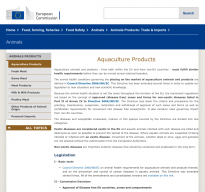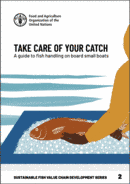Markets for Misuse of Veterinary Drugs
Understanding market food safety requirements is vital to preventing product rejection and food loss and waste (FLW).
Countries wishing to export aquaculture products to the EU need approval, which is given upon compliance with Veterinary residue monitoring requirements as outlined in Articles 29 and 30 of Council Directive 96/23/EC. The EU sees these product as originating from a “farming” perspective and not from a fishery one, hence an annual control plan run by the CA is required for heavy metals, contaminants, residues of pesticides and veterinary drugs must be in place to verify compliance with EU requirements. The Directive outlines the need for submitting a plan setting out the guarantees which it offers as regards the monitoring of the groups of residues and substances referred to in Annex I of Council Directive 96/23/EC. The residue-monitoring programme is submitted by the CA of the country of origin to the EC for initial approval and needs to be presented annually for evaluation and renewal.
The EU has one of the highest food safety standards in the world – largely thanks to the solid set of EU legislation in place, which ensures that food is safe for consumers. A key tool to ensure the flow of information to enabling swift reaction when risks to public health are detected in the food chain is RASFF – the Rapid Alert System for Food and Feed.
RASFF enables information to be shared efficiently between its members (EU Member State national food safety authorities, Commission, EFSA, ESA, Norway, Liechtenstein, Iceland and Switzerland) and provides a round-the-clock service to ensure that urgent notifications are sent, received and responded to collectively and efficiently. Thanks to RASFF, many food safety risks had been averted before they could have been harmful to European consumers.
The US market also requires a Hazard Analysis Critical Control Point (HACCP) system to control food safety hazards. Aquaculture hazards include those associated with veterinary drugs and other chemicals.
Key Publications
EU Market Access For Fishery And Aquaculture Products Guide aimed at fostering access to the European market through information dissemination. |
| |
The animal health conditions governing the placing on the market of aquaculture animals and products are defined and have been amended several times to update EU legislation to new situations and scientific knowledge. | ||
Rapid Alert System for Food and Feed RASFF enables information to be shared efficiently between its members and provides a round-the-clock service to ensure that urgent notifications are sent, received and responded to collectively and efficiently. |
More Resources
More Resources
31 October 2023














